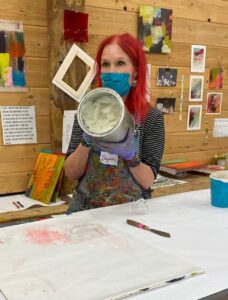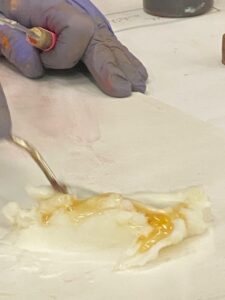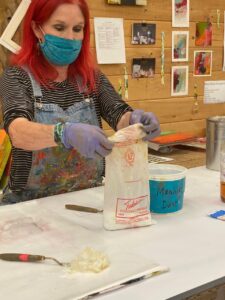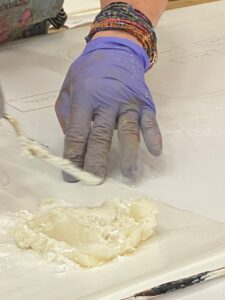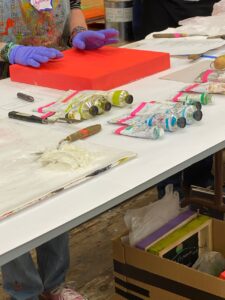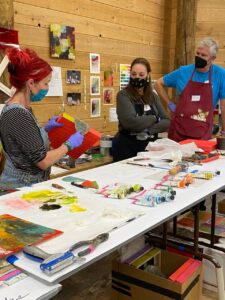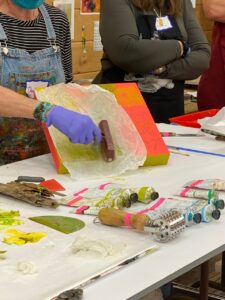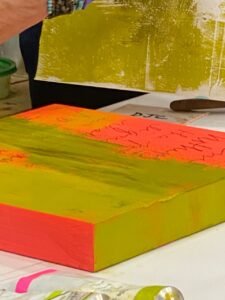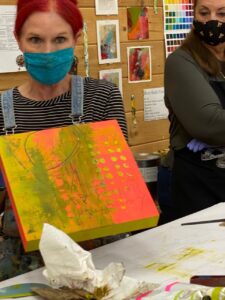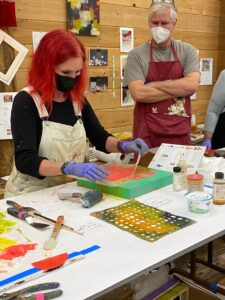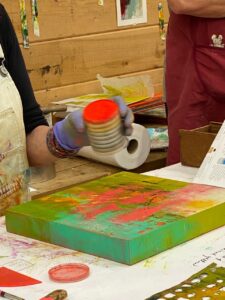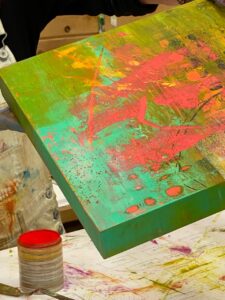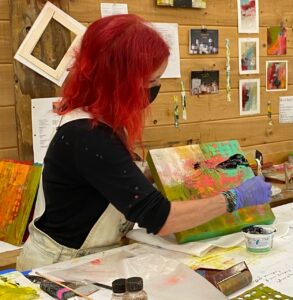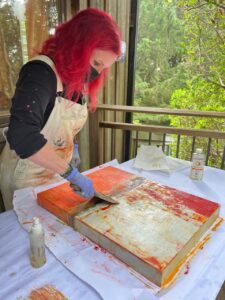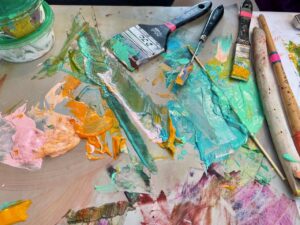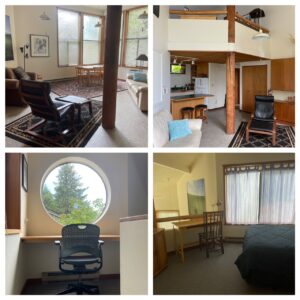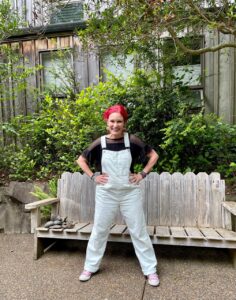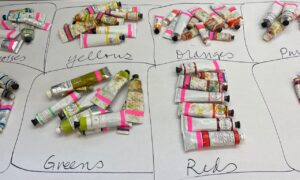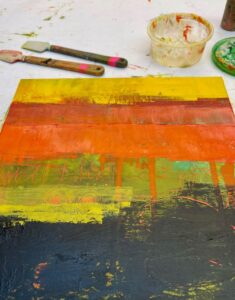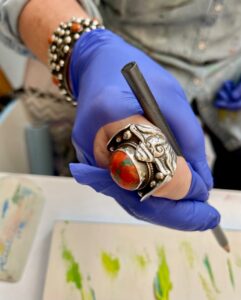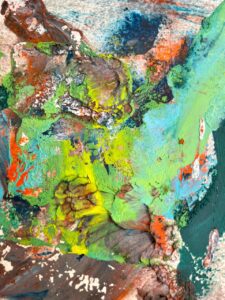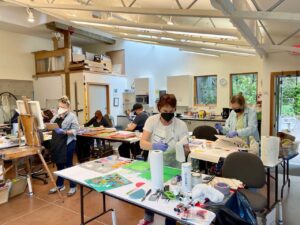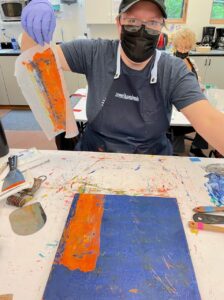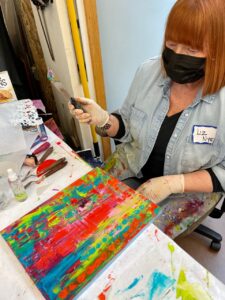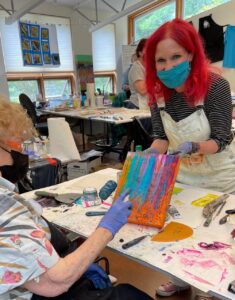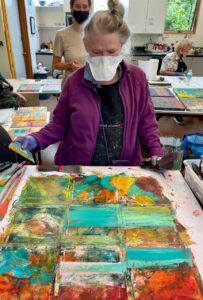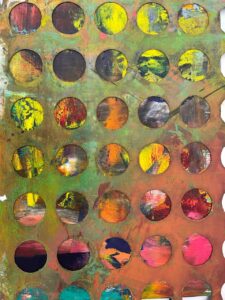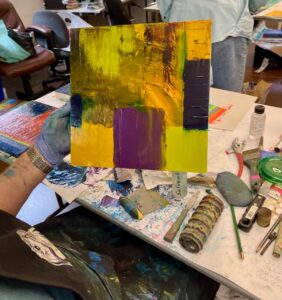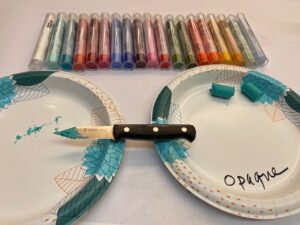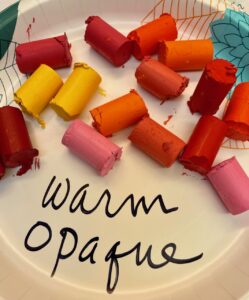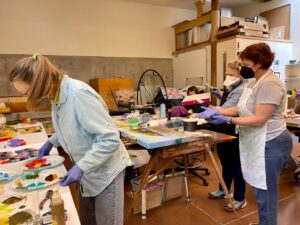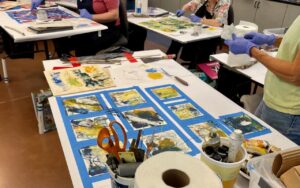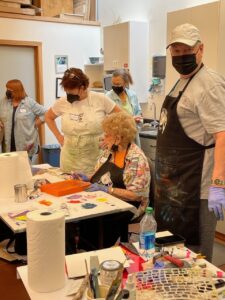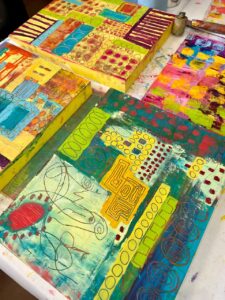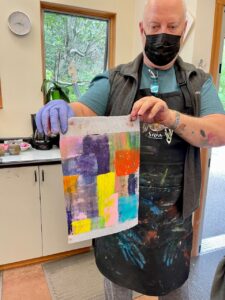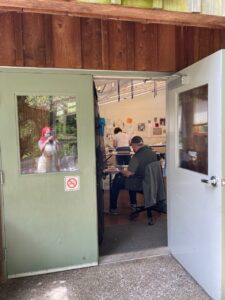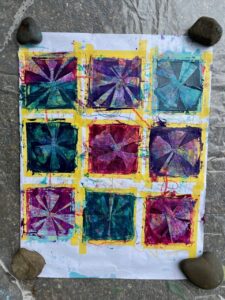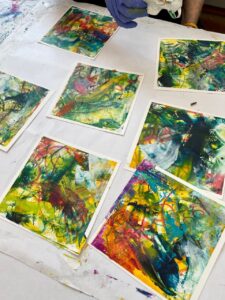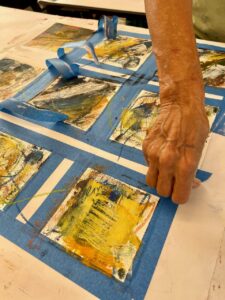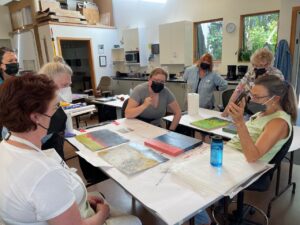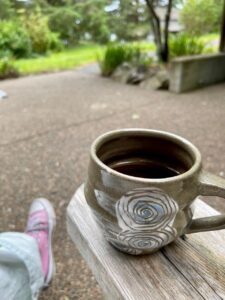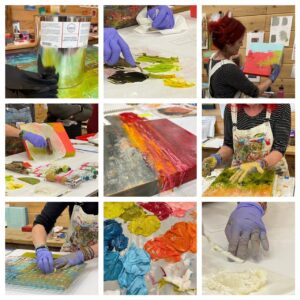
It has been a long time in coming, but I am happy to announce that I was invited to teach an online oil and cold wax class and the platform aligns with how I envisioned I would like to teach if I ever chose to teach online. Classes are taught live through Zoom (with recordings available to watch for 60 days).
Martha at Winslow Art Center reached out to me about a month ago to see if I would be interested in teaching with their online art school. Here is a little about the Winslow Art Center:
Winslow Art Center, a young and innovative art school established in 2011, is the creation of its owner/director, Martha Jordan. Originally founded as a brick-and-mortar art studio on Bainbridge Island, 5 miles across Puget Sound from Seattle, Martha’s vision was to offer small and intimate, live multi-day workshops and weekly art classes taught by world class professionals, and to supplement those classes in the Spring and Fall by offering overseas art tours to Italy led by the same instructors. The school and tours were popular and expanding when the Covid pandemic brought the world, and the Center, to a halt.
Martha, with the help of her daughters Anne, Amy and Addie and web designer Kato D, visualized real-time online classes happening over Zoom, putting in long hours to learn the new technologies while convincing instructors and students that distance teaching online could be both viable and rewarding. Martha’s dedication to helping others use the new online tools thrust upon us has been a major component of Winslow Art Center’s success. The results have exceeded even Martha’s wildest expectations. Today the Center offers nearly 80 online classes with instructors recognized as leaders in their chosen media. Moreover, the Center has graduated from a regional to a truly international school with instructors and students participating from across the United States and around the world.
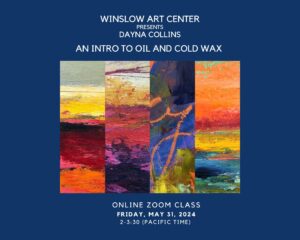
After digging into the website of the art center, I excitedly accepted the offer and we decided I would start by teaching an online version of my popular oil and cold wax class. My inaugural class is a teaser, An Intro to Oil and Cold Wax. This one is part of the art center’s popular Technique Takeaways, a 1-1/2 hour online class that offers a look at a particular art technique. My description of this intro class:
Painting with oil paint mixed with cold wax medium is like painting with whipped butter. It is soft and creamy, and when dry, it can be buffed to a beautiful sheen. In this 1-1/2 hour demo, Dayna will share about the many benefits of using cold wax medium with oil paint, share mixing ratios, methods for applying paint with putty and palette knives, how to speed up drying time, and offer a sampling of creative techniques. (There will be time for Q & A after the presentation.)
This mini class is scheduled for Friday, May 31, from 2-3:30 pm (Pacific time) with a cost of $40.
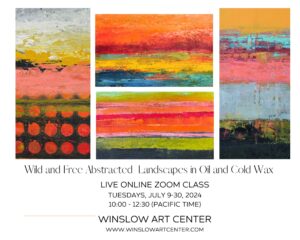
The main class I’m teaching, Wild and Free Abstracted Landscapes in Oil and Cold Wax, will be a complete class on all aspects of painting with oil and cold wax. This class covers everything from mixing demonstrations, a variety of techniques, and discussions about color, value, composition, and design elements. In addition, there will be discussions and demos about how to make more powerful compositions, add interest to our pieces, and how know when a painting is done.
One of the great things about this platform besides my teaching live and being able to interact with students in real time, is a private message board within our online classroom where I can dialogue with students (and students with each other). Questions can be asked, work can be shared, and feed back can be requested. I am excited that I get to interact with students throughout the week.
This class is scheduled for Tuesdays, July 9-30, from 10:00 am -12:30 pm (Pacific time), with a cost of $295.

To register, head to Winslow Art Center and choose one (or both) of my classes. Take time to browse the art center’s website; they have a FAQ page that is very helpful.
